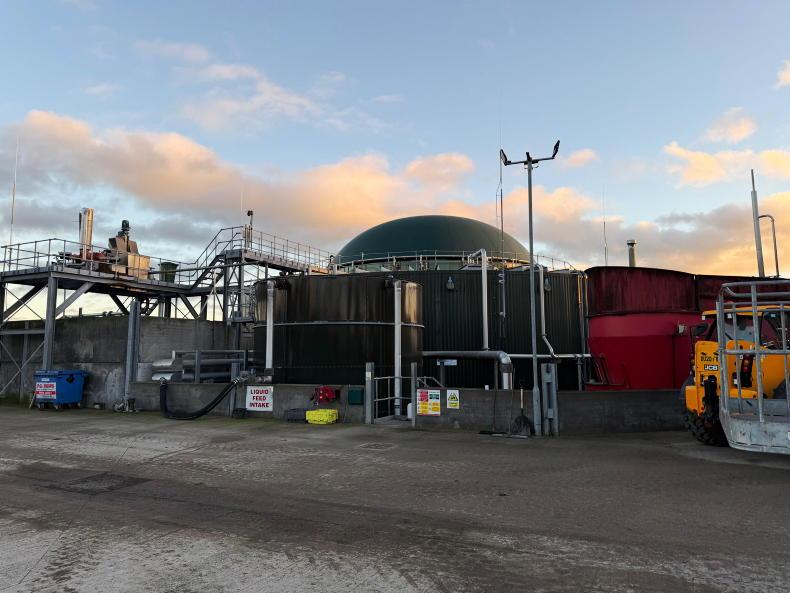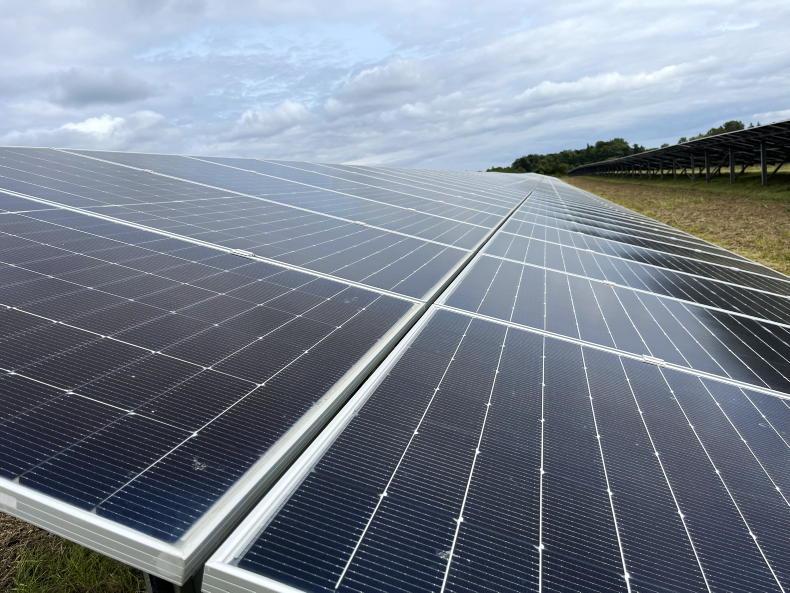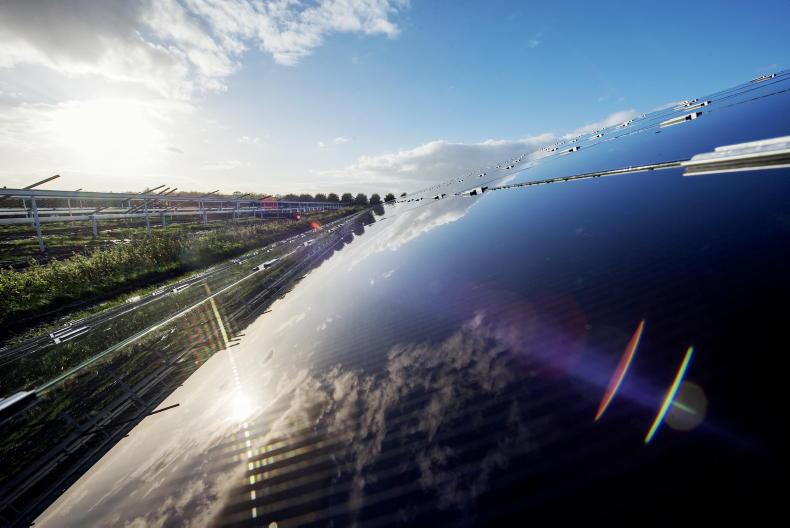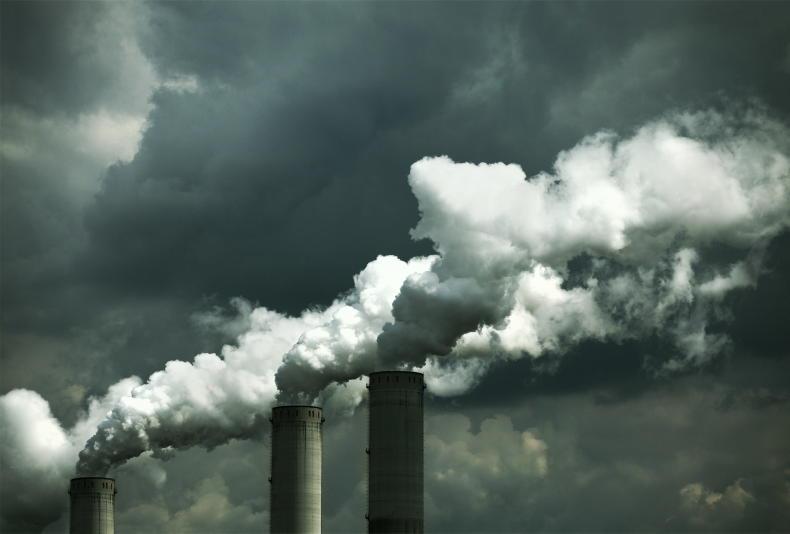In arecent visit to the country, European Commission president Ursula von der Leyen said Ireland is on its way to becoming a clean energy superpower in the EU.
While we may be on the way, our current renewable energy generation figures are nothing to be proud of. In 2021, around 12.5% of our total energy came from renewable sources. Over 86% came from oil, coal, gas and peat.
When compared with other EU member states, we ranked fourth last for renewable energy generation.
To put this in context, Sweden leads the way with around 60% of their energy coming from renewables in 2021.
In 2020 we had a legally binding target for 16% of our energy to come from renewable sources. Our final figure for the year came to 16.16% but the Government had to purchase statistical transfers from other member states in order to meet that target.
If we break down our 2020 target, each sector had to achieve the following:
10% renewables in transport. 12% renewables in heat.40% renewables in electricity.Now if we look at how we performed in 2021, according to the latest figures from the Sustainable Energy Authority of Ireland, 4.3% of energy used in transport came from renewables, 5.2% in heat and 36.4% in electricity.
As the above figures show, Ireland has an atrocious track record for renewable energy, only meeting legally binding 2020 targets through a technicality.
The reality is that Ireland didn’t take renewables seriously until relatively recently.
Credit
The State’s flagship renewable electricity support scheme, which has been central to the funding of many of Ireland’s new wind and solar farms over the past three years, is something that the current Government takes great pride in.
While the scheme has been very effective and represents good value for money for consumers, it’s worth remembering that this scheme was designed and approved in 2018, when Denis Naughten was the Minister for Communications, Climate Action and Environment.
Successes
So what has the current Government achieved so far to be proud off?
The launch of the microgeneration support scheme, which allowed consumers, businesses and farmers to sell electricity back to the grid, could be hailed as a success, although this was a legal mandate by the EU and already commonplace across much of the union.
We hear a lot about Ireland’s offshore wind potential and we now have a firm timeline of when the first support auction for offshore wind developers will take place.
However, Ireland’s offshore wind industry is plagued with inefficiencies in planning and connection capacities so few really believes we’ll meet our target of 7,000 MW of offshore wind energy by 2030.
Arguably the Government’s biggest success so far was the removal of the requirement for planning permission for solar PV systems in most areas.
Furthermore, the soon to be introduced 60% grant rate for panels for farmers has been hailed as a game changer.
So there have been some successes in the renewable electricity industry, but what about heat?
Arguably the Government’s strategy is to electrify heat. For many, however, that’s simply not possible. That’s were biomass and biomethane come in.
The Government set a target this year for 5.7TWh (10% of Ireland’s gas demand) to come from biomethane from anaerobic digestion (AD) plants by 2030. A bold target by any account.
In order to achieve this, the Government plans to introduce a renewable heat obligation (RHO) in 2024 which will mandate suppliers of all fuels in the heat sector to ensure that a certain proportion of the energy supplied is renewable.
Biomethane is likely to be the go-to fuel for suppliers to meet their obligation.
However, everyone in the industry knows that this obligation simply isn’t enough to stimulate the development of an AD industry. In the absence of a support scheme, which the Government traditionally hasn’t been in support of, this target simply won’t be met.
While there have been some positive soundbites around support from the Government, there has been little in the way of a clear policy direction on this.
For that reason, I certainly wouldn’t class 2022 as a successful year for AD.
As for biomass, with the exception of Bord na Móna’s commitment to source biomass for forestry and Willow Warm’s ambition to increase its tonnages, it seems that for many, energy crops such as willow and miscanthus are set to be consigned to the history books as a viable diversification option for farmers.
2023 and beyond
As we face into 2023, it’s safe to say that nobody expects the energy or climate crisis to lessen. If we are to seriously put the country on a pathway to becoming a clean energy superpower in the EU, we need to see the removal of barriers to the rapid rollout of renewables.
Planning is a vitally important part of any development and every single citizen has the right to object to a renewable project.
However, if the cause of those objections is adequately dealt with in the planning process, then a project should be allowed to proceed without a lengthy judicial review.
Both the EU and the Irish Government recognise this and I expect we’ll see some progress in this regard in 2023.
As for funding, like I said earlier, the introduction of a 60% grant for farmers to install solar PV on their farms is a game changer.
This is the level of ambition we need to see across all renewable energy technologies.
Ireland is in a unique situation where we can secure additional funding from the EU to help us to do that, but as we know, the Government track record on this hasn’t been great so far.
So I also expected to see progress in this area in 2023.
In arecent visit to the country, European Commission president Ursula von der Leyen said Ireland is on its way to becoming a clean energy superpower in the EU.
While we may be on the way, our current renewable energy generation figures are nothing to be proud of. In 2021, around 12.5% of our total energy came from renewable sources. Over 86% came from oil, coal, gas and peat.
When compared with other EU member states, we ranked fourth last for renewable energy generation.
To put this in context, Sweden leads the way with around 60% of their energy coming from renewables in 2021.
In 2020 we had a legally binding target for 16% of our energy to come from renewable sources. Our final figure for the year came to 16.16% but the Government had to purchase statistical transfers from other member states in order to meet that target.
If we break down our 2020 target, each sector had to achieve the following:
10% renewables in transport. 12% renewables in heat.40% renewables in electricity.Now if we look at how we performed in 2021, according to the latest figures from the Sustainable Energy Authority of Ireland, 4.3% of energy used in transport came from renewables, 5.2% in heat and 36.4% in electricity.
As the above figures show, Ireland has an atrocious track record for renewable energy, only meeting legally binding 2020 targets through a technicality.
The reality is that Ireland didn’t take renewables seriously until relatively recently.
Credit
The State’s flagship renewable electricity support scheme, which has been central to the funding of many of Ireland’s new wind and solar farms over the past three years, is something that the current Government takes great pride in.
While the scheme has been very effective and represents good value for money for consumers, it’s worth remembering that this scheme was designed and approved in 2018, when Denis Naughten was the Minister for Communications, Climate Action and Environment.
Successes
So what has the current Government achieved so far to be proud off?
The launch of the microgeneration support scheme, which allowed consumers, businesses and farmers to sell electricity back to the grid, could be hailed as a success, although this was a legal mandate by the EU and already commonplace across much of the union.
We hear a lot about Ireland’s offshore wind potential and we now have a firm timeline of when the first support auction for offshore wind developers will take place.
However, Ireland’s offshore wind industry is plagued with inefficiencies in planning and connection capacities so few really believes we’ll meet our target of 7,000 MW of offshore wind energy by 2030.
Arguably the Government’s biggest success so far was the removal of the requirement for planning permission for solar PV systems in most areas.
Furthermore, the soon to be introduced 60% grant rate for panels for farmers has been hailed as a game changer.
So there have been some successes in the renewable electricity industry, but what about heat?
Arguably the Government’s strategy is to electrify heat. For many, however, that’s simply not possible. That’s were biomass and biomethane come in.
The Government set a target this year for 5.7TWh (10% of Ireland’s gas demand) to come from biomethane from anaerobic digestion (AD) plants by 2030. A bold target by any account.
In order to achieve this, the Government plans to introduce a renewable heat obligation (RHO) in 2024 which will mandate suppliers of all fuels in the heat sector to ensure that a certain proportion of the energy supplied is renewable.
Biomethane is likely to be the go-to fuel for suppliers to meet their obligation.
However, everyone in the industry knows that this obligation simply isn’t enough to stimulate the development of an AD industry. In the absence of a support scheme, which the Government traditionally hasn’t been in support of, this target simply won’t be met.
While there have been some positive soundbites around support from the Government, there has been little in the way of a clear policy direction on this.
For that reason, I certainly wouldn’t class 2022 as a successful year for AD.
As for biomass, with the exception of Bord na Móna’s commitment to source biomass for forestry and Willow Warm’s ambition to increase its tonnages, it seems that for many, energy crops such as willow and miscanthus are set to be consigned to the history books as a viable diversification option for farmers.
2023 and beyond
As we face into 2023, it’s safe to say that nobody expects the energy or climate crisis to lessen. If we are to seriously put the country on a pathway to becoming a clean energy superpower in the EU, we need to see the removal of barriers to the rapid rollout of renewables.
Planning is a vitally important part of any development and every single citizen has the right to object to a renewable project.
However, if the cause of those objections is adequately dealt with in the planning process, then a project should be allowed to proceed without a lengthy judicial review.
Both the EU and the Irish Government recognise this and I expect we’ll see some progress in this regard in 2023.
As for funding, like I said earlier, the introduction of a 60% grant for farmers to install solar PV on their farms is a game changer.
This is the level of ambition we need to see across all renewable energy technologies.
Ireland is in a unique situation where we can secure additional funding from the EU to help us to do that, but as we know, the Government track record on this hasn’t been great so far.
So I also expected to see progress in this area in 2023.










SHARING OPTIONS